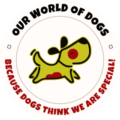
Introduction
“Dogs have mastered the art of communication through their expressive eyes,” a phrase commonly heard from dog owners and enthusiasts. Among the myriad of canine expressions, one that has garnered significant attention is the “dog side eye.” In this article, we delve into the science behind this intriguing behavior, exploring its origins, purposes, and the underlying psychology.
Understanding Dog Side Eye
What is Dog Side Eye?
The term “dog side eye,” also known as “side eye dog,” refers to a peculiar expression where a dog averts its gaze while keeping its head oriented toward an object or person of interest. This behavior involves a sidelong glance with a slight turn of the head, often accompanied by a furrowed brow or raised eyebrow.
Origins and Evolutionary Significance
To comprehend the significance of dog side eye, it’s crucial to understand its evolutionary origins. Canines, as descendants of wolves, have evolved complex communication mechanisms to convey their intentions, emotions, and needs. The side eye behavior may have roots in these ancestral communication strategies.
In the wild, wolves and other canids use indirect eye contact to convey submissiveness or avoid confrontation with higher-ranking pack members. The side eye can be seen as a way for dogs to express similar emotions in human environments where they may perceive themselves as subordinate or in potentially stressful situations.
Various Reasons for Side Eye Dog
Dog side eye can manifest for a multitude of reasons and circumstances, including:
- Social Dynamics: Dogs may employ the side eye during interactions with other dogs to convey submission, playfulness, or negotiation without resorting to aggression.
- Human Interactions: In the presence of humans, dog side eye can signal emotions such as discomfort, curiosity, or excitement. It may occur when dogs encounter unfamiliar people, objects, or situations.
- Food Possession: Dogs may give the side eye when guarding their food bowls, signaling possessiveness or unease about sharing their meals with other pets or humans.
- Favorite Toys: A dog might employ the side eye while watching its cherished toy or object, indicating attachment and a desire to engage in play or seek attention from its owner.
Understanding these diverse scenarios can help pet owners interpret their dog’s emotions and respond appropriately.
The Psychology Behind Dog Side Eye
Non-Verbal Communication
Dogs communicate primarily through body language and vocalizations. The side eye behavior can be considered a non-verbal communication method, signaling a variety of emotions or intentions. These may include discomfort, uncertainty, curiosity, or even playfulness.
Emotion Expression
When a dog gives you the side eye, it’s essential to consider the context. In some instances, it may indicate a dog’s unease or apprehension. This is often observed when a dog encounters an unfamiliar person, object, or situation. The sidelong gaze can convey hesitance or a cautious approach.
On the other hand, a dog may also give the side eye when it is curious or excited about something. In these cases, the behavior might be accompanied by a wagging tail or a playful demeanor. Understanding the accompanying body language is crucial to interpreting the dog’s emotional state accurately.
Scientific Explanations for Dog Side Eye
Neurobiology and Gaze Aversion
The scientific explanation for dog side eye lies in their neurobiology. Researchers have found that when dogs avert their gaze, they may be avoiding direct eye contact, which can be perceived as confrontational or dominant in the canine world.
A study published in the journal “Animal Behaviour” in 2007 demonstrated that dogs exhibit a greater tendency to avert their gaze when interacting with unfamiliar or dominant individuals. This behavior helps maintain social harmony and prevent conflicts.
Additionally, researchers have found that dogs, like humans, have a dedicated brain region for processing facial expressions, including eye contact. The amygdala, a part of the brain responsible for emotional processing, plays a crucial role in interpreting the emotions conveyed by eye contact. Dog side eye may represent a way for dogs to manage their emotional responses to various situations.
The Language of Dog Side Eye
Dog side eye, also known as “side eye dog,” may sometimes be mistaken for a simple glance, but it is a nuanced form of communication that can convey a range of emotions and intentions. Understanding the subtleties of this behavior can lead to better interactions and stronger bonds between humans and their canine companions.
Context Matters
To interpret dog side eye accurately, it’s crucial to consider the context in which it occurs. For example, if your dog gives you the side eye when you approach its food bowl, it may be signaling possessiveness or unease about sharing its meal. On the other hand, if the same dog gives you the side eye while playing fetch, it might be expressing eagerness and anticipation for the next throw.
Social Dynamics
Dog side eye is not limited to interactions with humans; it also plays a role in canine social dynamics. When dogs engage with each other, the side eye can be observed during moments of negotiation, submission, or play. It serves as a tool for maintaining social harmony within the pack, avoiding conflicts, and conveying intentions without resorting to aggression.
Individual Variations
Just as humans have distinct personalities and communication styles, dogs also exhibit individual variations in their use of side eye behavior. Some dogs may rely more heavily on this expression, while others might use it sparingly. Recognizing these individual differences can enhance your understanding of your dog’s unique personality and preferences.
Training and Positive Reinforcement
For dog owners, comprehending the subtleties of dog side eye can be beneficial when it comes to training and reinforcing positive behaviors. When your dog exhibits side eye behavior in response to a particular stimulus, whether it’s a stranger or another dog, you can use positive reinforcement techniques to reward calm and confident reactions. This can help your dog become more comfortable and less anxious in various situations.
When Food and Toys Enter the Equation
Dog side eye isn’t solely reserved for social interactions and dominance dynamics. Dogs may also employ this behavior when they are faced with desirable objects, such as food or their favorite toys. When a dog gives you the side eye while looking at its food bowl, it often signals possessiveness or a desire to protect its meal from potential threats, including other pets or humans.
Similarly, a dog may give the side eye while watching its toy or cherished possession while still maintaining a watchful eye on its human companion. This dual focus indicates the dog’s attachment to the object and its desire to engage in play or receive attention from its owner.
Understanding these scenarios can help pet owners navigate potential conflicts and ensure a harmonious living environment for both humans and their canine companions.
The Evolution of Dog Communication
To appreciate the phenomenon of dog side eye fully, it’s essential to delve deeper into the evolutionary history of dogs and their communication strategies. Dogs, descendants of wolves, have evolved alongside humans for thousands of years. During this co-evolutionary journey, dogs have developed a remarkable ability to understand and respond to human cues.
One theory posits that dog side eye could be a result of this co-evolution. As dogs adapted to human environments, they may have adopted subtle cues to communicate their feelings and intentions more effectively. The sidelong glance, which avoids direct eye contact, could serve as a way for dogs to convey their emotions without causing discomfort to their human companions.
Dog Side Eye and Canine Anxiety
While dog side eye can signify various emotions, it is often associated with anxiety and discomfort in certain situations. Dogs may give the side eye when they encounter unfamiliar people, animals, or environments, expressing their unease or wariness. This behavior may also manifest when a dog anticipates a negative outcome, such as a visit to the veterinarian or a bath.
Studies have shown that prolonged exposure to stressors can have adverse effects on a dog’s physical and mental well-being. Chronic anxiety can lead to health issues and behavioral problems. Recognizing dog side eye as a potential indicator of stress allows dog owners to intervene and provide support when their pets are feeling anxious.
Canine Emotions and Side Eye
To further understand the range of emotions associated with dog side eye, it’s essential to explore canine emotions and their expression. Dogs experience emotions similar to humans, including joy, fear, anger, and curiosity. The sidelong glance can serve as a versatile tool for conveying these emotions.
For example, a dog may give the side eye when it encounters a new and exciting toy, expressing curiosity and eagerness to explore. On the contrary, if a dog feels threatened or cornered, it may give the side eye as a way of signaling discomfort or fear. By paying attention to the context and accompanying cues, dog owners can better interpret their furry friend’s emotional state.
Cross-Species Communication
One remarkable aspect of dog side eye is its effectiveness in cross-species communication. Dogs have adapted to communicate with humans, and the sidelong glance is a prime example of this adaptation. When dogs give their owners the side eye, they may be attempting to convey their emotions and needs in a way that is easily understood by humans.
This ability to communicate with humans on a non-verbal level has contributed significantly to the strong bond between dogs and their human companions. It’s not uncommon for dog owners to respond to their pet’s side eye with comforting words, affection, or the desired action, reinforcing the communication loop between the two species.
Summary
In the world of canine communication, the “dog side eye” is a fascinating behavior that reveals much about a dog’s emotions and intentions. From its evolutionary roots as a survival strategy to its manifestation in modern domesticated dogs, the sidelong glance is a tool for non-verbal expression.
Understanding the psychology and scientific explanations behind dog side eye, as well as considering the context and individual variations, can help pet owners and enthusiasts better comprehend their canine companions. By paying attention to the subtle cues and body language, we can decipher the nuanced messages our dogs convey through this intriguing behavior.
For more pet tips, keep reading the Our World of Dogs blog.

